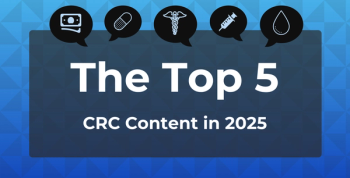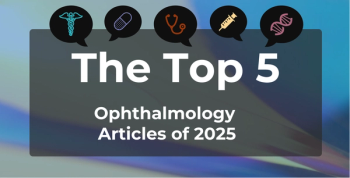
Opportunities Remain to Improve Access for Pediatric Dermatology: Elizabeth Garcia Creighton
Pediatric patients with dermatologic conditions have limited access to specialized pediatric care. While receiving care from a general dermatologist could improve access to care for common skin concerns, a study of mystery callers found many general dermatologists were unwilling to accept new pediatric patients, explained Elizabeth Garcia Creighton, BA, a medical student at the University of Colorado School of Medicine.
In the study, mystery callers posed as parents of children with a hemangioma, eczema, or acne to request the next available appointment. The results excluded practices that were not accepting new patients. Of the general dermatologists who were accepting new patients, only 57.7% agreed to see a pediatric patient.
Creighton presented her findings at the
These answers have been edited for style and clarity.
The American Journal of Managed Care® (AJMC®): The study focused on 3 conditions: hemangioma, eczema, and acne. Were the 3 chosen for a specific reason? Do you think the findings would differ if you expanded to more conditions?
We chose these 3 because we wanted [the conditions] to be classical pediatric vignettes that most general dermatologist should be comfortable with: treating acne, treating eczema—atopic dermatitis—and then hemangioma, which is a little bit more subspecialized, but they are 3 very classic, very common present pediatric dermatology presentations that most general dermatologists should be comfortable treating. That's why we chose that and not something more like obscure or specific to pediatric dermatology.
The other reason why we chose those 3 is because we wanted different age groups. We wanted to see if maybe some general dermatologist would be more likely to take maybe, a teenager with acne but would not be so comfortable with a baby or 6-week-old with a hemangioma. We wanted to see if there was a difference between the age groups that the general dermatologist would be comfortable seeing. Of course, these 3, because they're very common conditions, pediatric dermatologists are very comfortable seeing these. It's more so about choosing some [conditions] that would be very comfortable for the general dermatologists as well.
I think if we had chosen just acne, for example, then we might see that more general dermatologists see teenagers, because we did find that a patient with acne was more likely to get an appointment than a patient with a hemangioma. That hinted to us that maybe the general dermatologists are not very comfortable seeing babies, but they'd be very comfortable seeing a 14-year-old or a 16-year-old with acne. I'm sure if we had chosen some more obscure pediatric dermatology conditions, then the general dermatologist would be like, “That needs to go to a university hospital.” But we chose 3 conditions that are very common, very ubiquitous with the goal of it being that most general dermatologists should feel comfortable treating them, and should see them very frequently, and have encountered them a lot in their training.
AJMC: Only a little bit more than half (57.7%) of the general dermatologists accepted pediatric patients. You said you thought they would be more comfortable based on the conditions picked, so were you surprised then that a greater proportion didn’t accept pediatric patients?
Yes, that was definitely the most surprising finding, for sure. There's a lot of literature that shows that pediatric dermatology has a long wait time. We looked at access—whether they get an appointment or not—and then we looked at wait times. It's been very well documented that pediatric dermatology has long wait times because there aren't very many pediatric dermatologists. That had been well documented. Finding that wasn't as surprising to us, but finding that a little less than half of [general dermatologists] would not see pediatric patients, was definitely surprising.
We don't really know why. We don't know if it's a clinic policy, “oh, we don't see kids under this age at our clinic,” especially some of the private practices. We also don't know if maybe they don't feel comfortable. Maybe after you’ve finished your training in dermatology, and you're out in the field, and you're working in a clinic where you mainly see adults, maybe you don't feel very comfortable seeing a baby now, a two-month-old baby with a hemangioma.
That's something we would hope to explore more in the future, is why are there these differences? Why are why are so many general dermatologists not seeing children? Is it because of lack of comfort or education? Because we could try to make it so that there's a more rigorous pediatric dermatology education throughout the country, or is it because of the way practices are set up that they don't see kids under a certain age? I guess that was definitely the most interesting finding, is that a lot of the general dermatology clinics would not take children, and then trying to figure out why that is, is also going to be very interesting.
AJMC: It sounds like more research is needed, but were there any patterns you observed of those general dermatologists who would accept pediatric patients?
Yeah, a little bit more research is needed. We did see that…the teenagers with acne or the toddlers with atopic dermatitis—eczema— those 2 were more likely to be seen by a general dermatologist than a baby with a hemangioma. That could either be there's an age cut off, “We don't see children under 2 [years],” or it could be that general dermatologists are not feeling very comfortable seeing a baby, “Oh, that's very atypical for me to see, and I would feel more comfortable seeing a teenager or a toddler with eczema or atopic dermatitis.”
I think we'll need more research into that, but we did see some of those patterns with our data, that the teenagers with acne were most likely to be seen, and then the toddlers with eczema, and then finally, babies with hemangiomas.
I think another thing we saw is [differences] by different practices. We also are doing an analysis by different practices. I think certain private practices are less likely to see babies than a university setting or groups that are not standalone private practices. Standalone private practices were even less likely.
Newsletter
Stay ahead of policy, cost, and value—subscribe to AJMC for expert insights at the intersection of clinical care and health economics.








